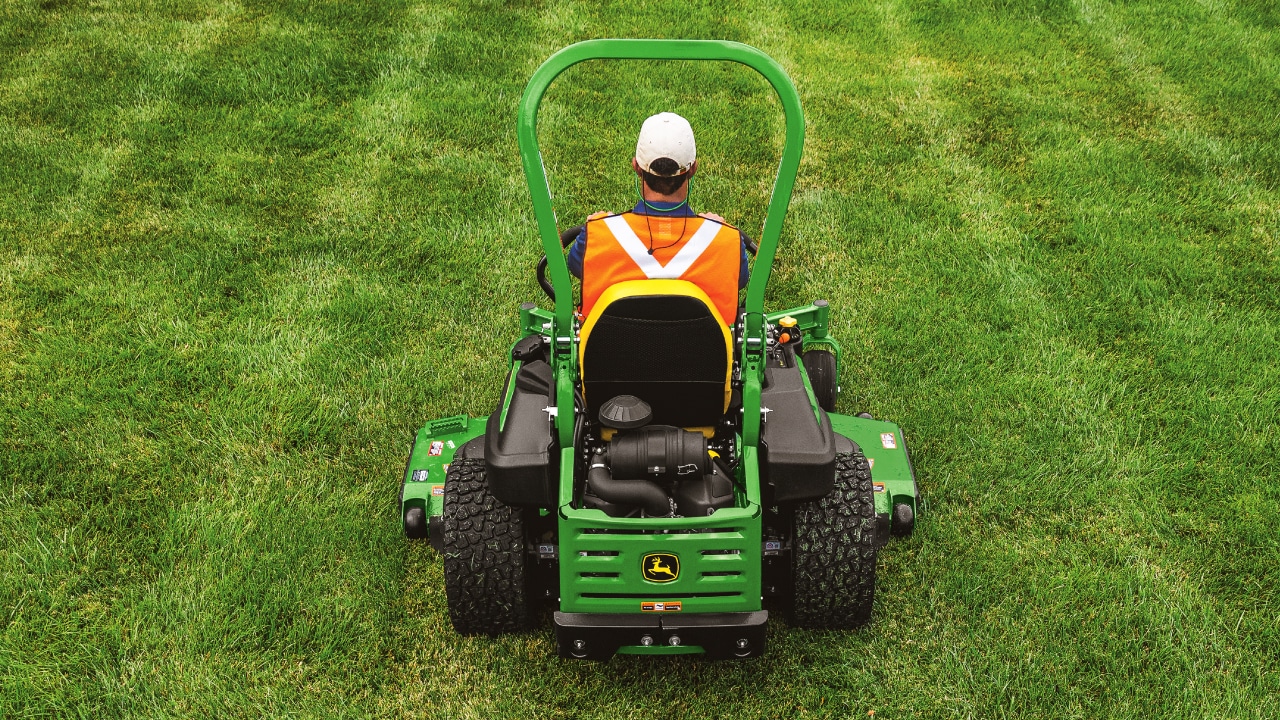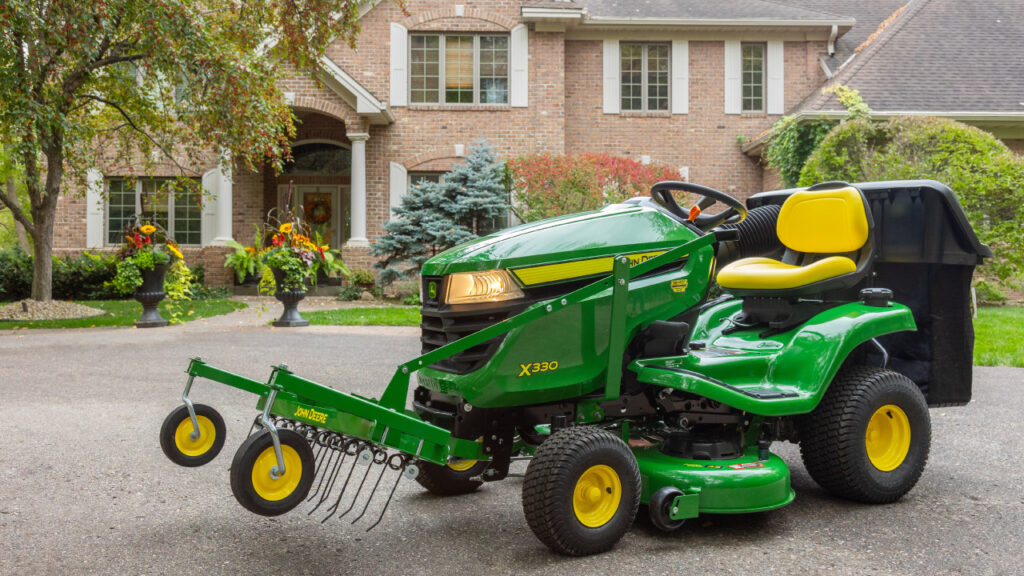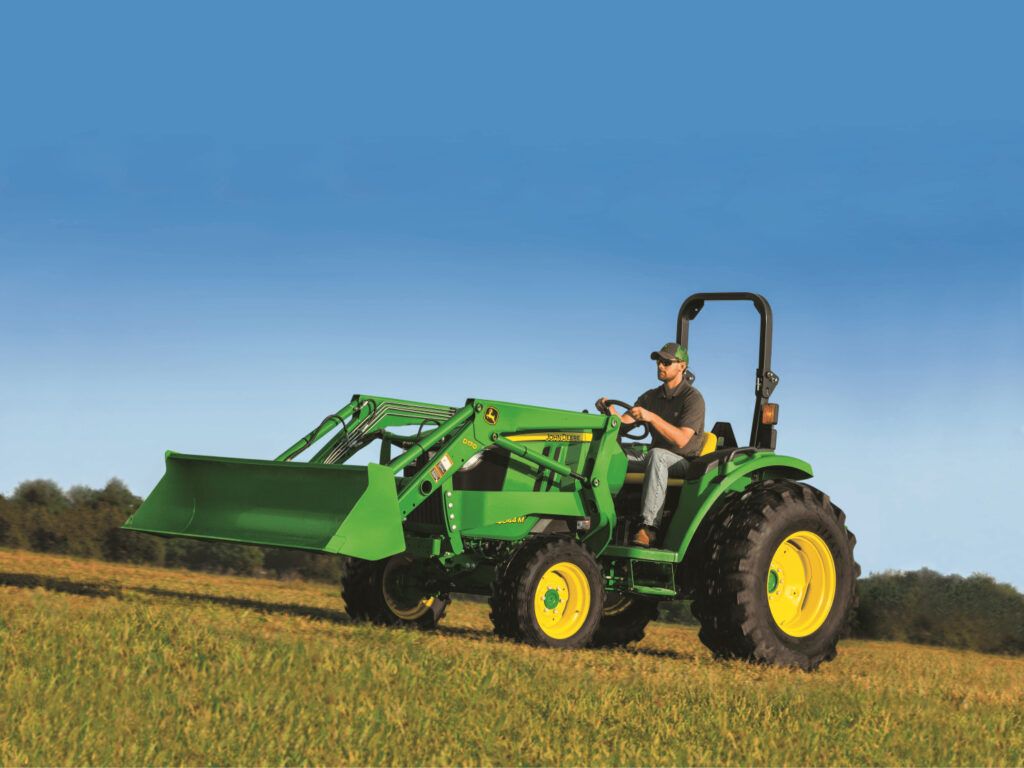
Rain on repeat? Tall, damp turf can turn any mow into a clog‑fest. Mowing wet grass is never ideal, but when schedules and growth force your hand, a smart plan prevents stalls, clumps, and stringers.
Use these five moves to keep airflow high, blades cutting cleanly, and results tidy—especially when cutting tall grass after a rainy week.
Why tall, wet grass is hard on mowers
- Water‑logged clippings stick to decks and chutes, choking airflow.
- Engines bog when ground speed outpaces blade tip speed.
- Wet blades bend and lay flat, so a single pass leaves mohawks.
- Slippery slopes and saturated soil raise safety risks and create ruts.
Always follow your owner’s manual for model‑specific settings and limits.
1) Stage the job: raise the deck and double‑cut
- Start at your highest cutting height to knock growth down without bogging.
- If possible, let clippings dry briefly.
- Make a second pass lower and in a different direction to stand blades up and clean the finish.
- In extreme growth, a quick third pass in trouble spots beats forcing one heavy cut.
2) Choose the right deck mode and blade
- Use side discharge in wet conditions; it moves clippings away and preserves airflow.
- Avoid bagging until the lawn is dry—wet clumps plug chutes and bags quickly.
- Once things dry out, high‑lift blades collect better. Mulching blades shine only when you cut frequently on dry grass.
- Expect to clear the deck more often; stop as soon as discharge weakens.
3) Max blade speed, lower ground speed
- Run the engine at full throttle to keep blade tip speed high.
- Slow your pace so blades can lift, cut, and throw heavy clippings.
- If clogging starts, raise the deck one notch or plan to double‑cut after partial drying.
- For battery mowers, use freshly charged packs and a lower drive speed to maintain blade RPM.
4) Keep airflow moving: clean the deck and chute
- Wet clippings cake under the deck and along baffles; performance drops fast.
- Pause to scrape or brush the underside and clear the discharge chute whenever clumping appears.
- Check belt and idler areas for buildup that can cause slippage or overheated bearings.
- After mowing, rinse lightly or hand‑wash; don’t force water into spindles and bearings.
5) Pick your moment and protect the turf
- Aim for late morning or late afternoon when leaves are drier and temps are moderate.
- Skip saturated areas—if footprints fill with water or tires leave ruts, postpone.
- Avoid slopes until soil is firm; wear sturdy shoes for traction.
- Raise height in summer, follow the one‑third rule, and mow only what you can cut cleanly.
Field plan for rainy weeks (step‑by‑step)
- Walk the lawn first; flag hazards and avoid soggy zones.
- Perimeter pass to give clippings room to discharge.
- First pass: highest deck, full throttle, slower ground speed, side discharge aimed safely.
- Clear the deck whenever discharge weakens or stragglers appear.
- Second pass: drop the deck a notch and mow at a right angle to the first passes to lift flattened grass and tidy the look.
Troubleshooting: symptoms → quick fixes
- Constant clogging: Clean deck and chute; raise height; slow down; use side discharge.
- Stalls or power dip: Fresh fuel, clean air filter, full throttle, slower pace.
- Uneven finish / mohawks: Double‑cut in a different direction; sharpen blades; overlap 2–4 inches.
- Windrows / clump trails: Discharge into the previous pass; make shorter passes; clear buildup more often.
Safety reminders that matter
- Never reach into the chute; stop the blade first.
- Skip hillside mowing when wet; mow across slopes with a walk‑behind for control.
- Keep hands, shoes, and gloves dry for secure footing and grip.
Get through soggy weeks—in‑store help & parts
Fighting clogs, belt slip, or a deck that just won’t clear? Schedule In‑Shop Service, order genuine parts and blades, or explore new lawn mowers.
Ready to talk options for your yard? Find a location near you.
FAQs: mowing wet grass & cutting tall grass
Is mowing wet grass bad for the lawn?
It’s not ideal—wet leaves bend, clippings pack the deck, and disease risk rises. If you must mow, use side discharge, raise the height, and double‑cut.
What’s the safest way to tackle cutting tall grass after rain?
Stage it: highest setting first, then a lower pass at a right angle once clippings dry a bit.
Can I bag wet clippings?
Not recommended. Bags and chutes plug quickly; wait until turf is dry.
How slow should I go?
Keep blades at full throttle and reduce ground speed until discharge stays strong; make shorter passes if needed.


 MyME
MyME



